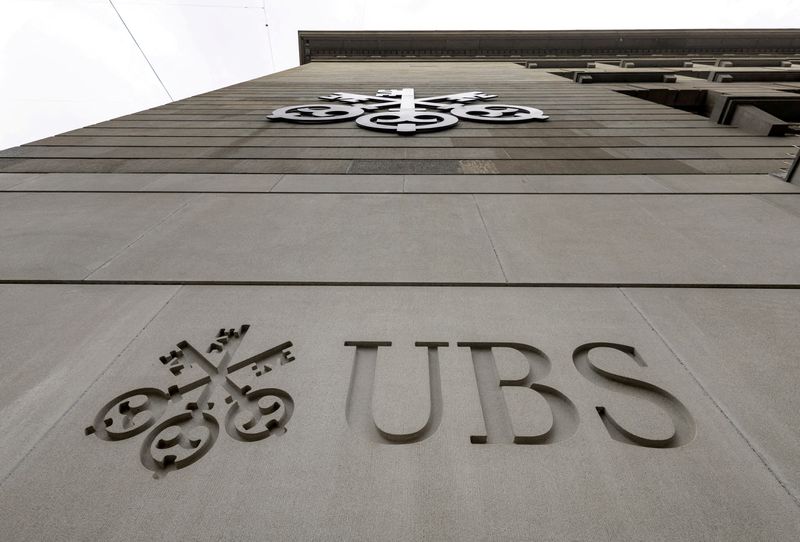UBS’s future AT1 bond sales could come at a big cost
2023.05.10 00:32

© Reuters. FILE PHOTO: A logo of Swiss bank UBS is seen in Zurich, Switzerland March 29, 2023. REUTERS/Denis Balibouse/File Photo
By Chiara Elisei
LONDON Reuters) – UBS could have to lure investors with significantly higher yields when it next sells Additional Tier 1 bonds, paying what analysts say could be a punitive price for a Swiss decision to wipe out Credit Suisse AT1s under their shotgun merger.
To sell new AT1s, UBS would have to offer a yield in the range of 12%, which would be prohibitive, the analysts said, noting that factors such as broader market conditions and progress with the integration could lower the cost of future financings.
The price of a UBS U.S. dollar AT1, first repayable in 2027, dipped to 68 cents on March 20, the day after the merger roiled the AT1 market, from 88 before and has since recovered to 78 cents. Its yield is trading around 12% after jumping to over 16% in March from around 8% earlier that month.
Yield on UBS $ AT1,
The risk that integrating Credit Suisse takes longer than expected, becoming costly, and a potential rating downgrade were other reasons why UBS was expected to pay a higher premium than it used to as one of Europe’s largest AT1 issuers.
UBS declined to comment.
AT1 bonds, introduced after the 2008 financial crisis, act as shock absorbers if a bank’s capital levels fall below a certain threshold as they can converted into equity.
A UBS AT1 bond sale would test sentiment after a merger that leaves it as Switzerland’s one and only global bank, a risky bet that makes the Swiss economy more dependent on a single lender.
“If UBS came to market today, it would have to pay up compared to the past,” said Simon Adamson, head of global financial research at CreditSights.
There are some signs that the broader $275 billion AT1 market is recovering.
Banks AT1 capital as % of risk-weighted assets,
Last month, Japan’s Sumitomo Mitsui (NYSE:) Financial Group was the first major global bank to sell AT1s since the March rout.
With time, analysts expect UBS to sell AT1s aplenty to meet its capital requirements. It has a 700 million Singapore dollar ($755 million) AT1 bond repayable in November followed by a heftier $2.5 billion bond in January.
Under an unwritten market practice, banks repay AT1 bonds – which are perpetual – at the earliest opportunity and then reissue.
But investors had feared that banks would decide not to do so as a lack of liquidity and soaring yields would make it hard to then sell new bonds.
Britain’s Lloyds (LON:) plans to redeem upcoming AT1s. Italy’s UniCredit has also said it would redeem AT1s but added it has no plans to sell similar bonds soon.
“Right now, AT1 pricing is not attractive so we expect low issuance while yields are this high,” said Mark Holman, Managing Partner at TwentyFour Asset Management.
“Additionally, there is and will continue to be a Swiss premium on yields while investors try to digest the risk that [Swiss regulator] FINMA passed on to the market,” he said.
RATINGS GAME
Investor appetite for a UBS AT1 could also hinge on its future credit profile.
Jefferies analysts said the merged bank, which will have more than $5 trillion in total invested assets, was attractive on a three-year view but posed significant risks over 12 months.
CreditSights’ Adamson’s added ratings of the two banks will need to be equalized and UBS could be downgraded as a result.
UBS is rated A- by S&P, while Credit Suisse was downgraded in November to one step above junk status.
“However way you look at it, it is going to reduce the credit worthiness of the acquiring bank,” said Adamson.
For others, clarity once the merger is completed and time would help.
“There will be a few bumps along the way, but in five to six months time, probably no one will be worried specifically about the AT1 market and there will be appetite for AT1s from UBS,” said Elisabeth Rudman, head of global financial institutions at DBRS Morningstar.








